Types of Curved Concrete Stairs and StepsTypes
Winder (Dog Leg) Stairs
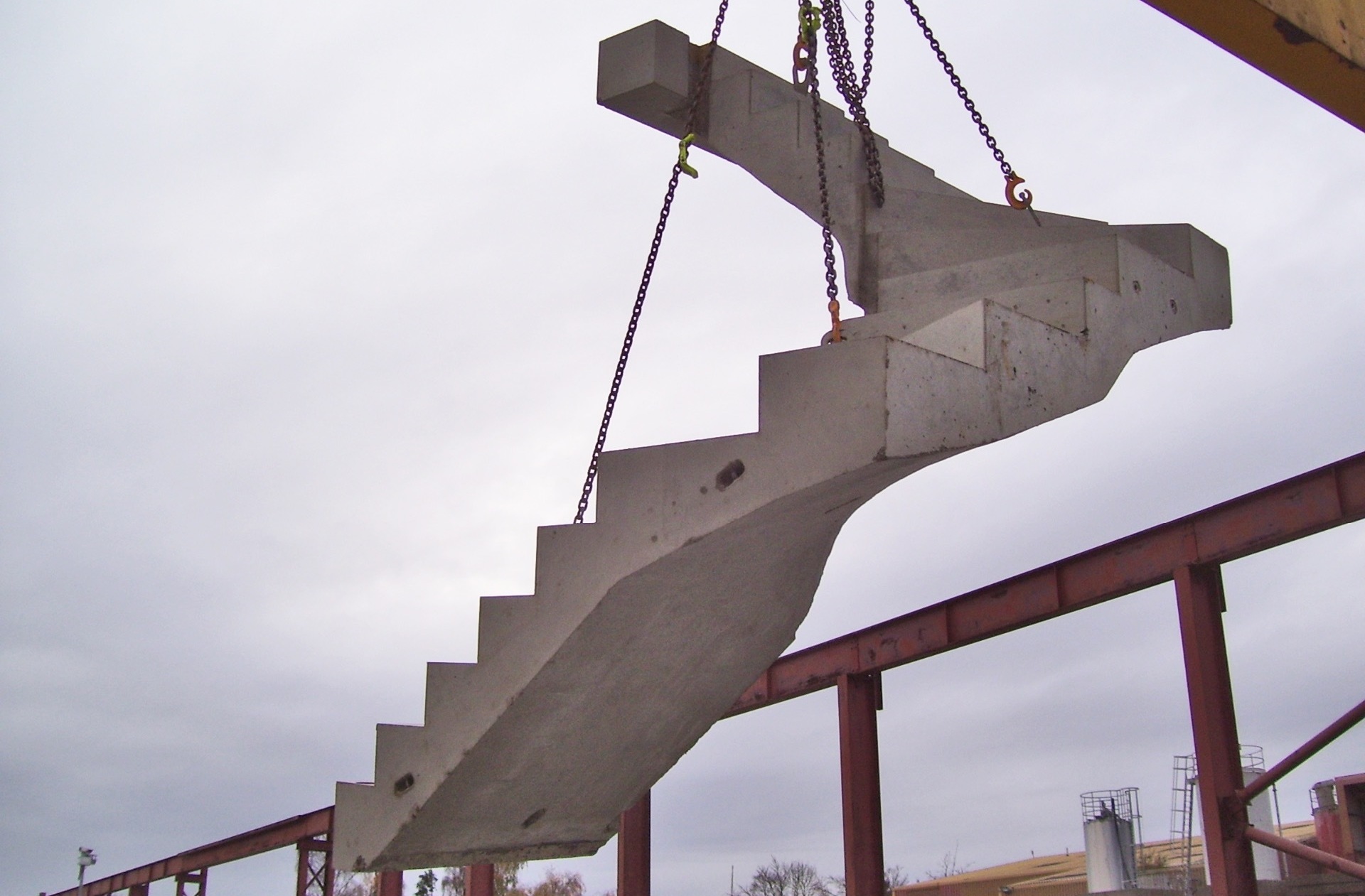
Winder or 'Dog Leg' stairs are narrower on one side than the other. They are used to change the directional travel of the stairs without the need for additional landings. A series of winders installed in formation form a circular or spiral stairway.
Helical Stairs
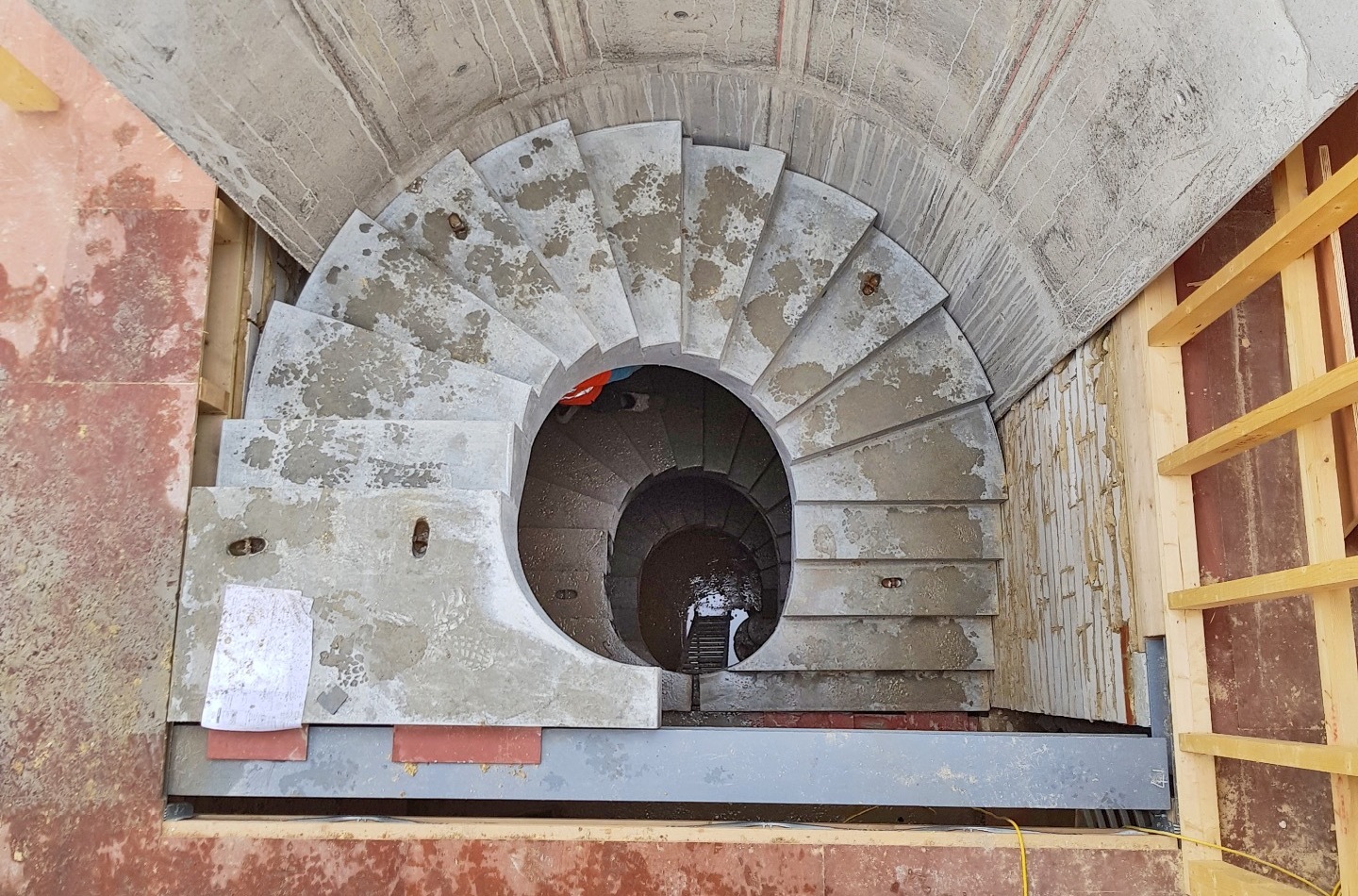
A helical or 'curved' stair describes a helix radiating around a central void. Helical stairs often form a continuous 'C' shape with a larger, consistent radius and can however be made to form an oval or elliptical shape configuration if required.
Cantilever Step Stairs
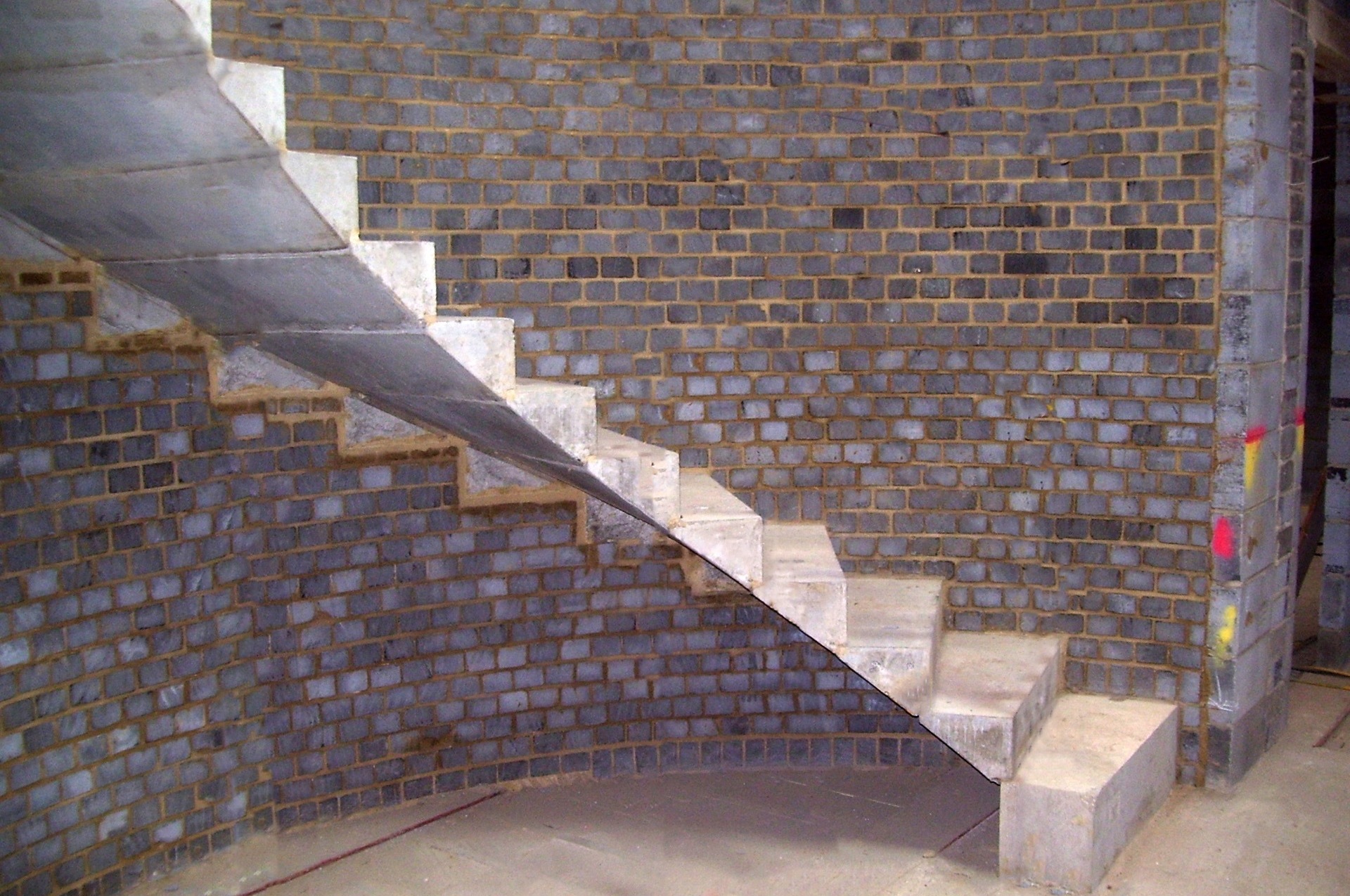
“Cantilever stone staircases” were widely constructed by 17-19th century stone masons throughout the UK. The steps are built into an adjacent wall and carry load in torsion, not by acting as a cantilever as the name would suggest. Thin waists as low as 50mm can be achieved when utilising this method.
Spiral Stairs
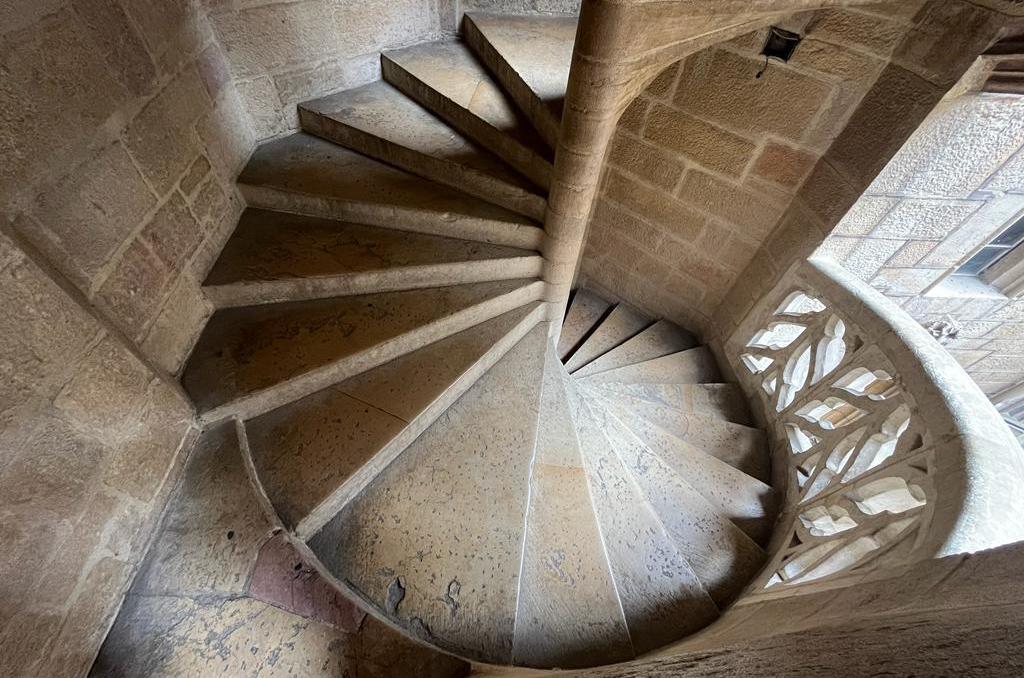
A spiral stair dictates a helix around a central column. Spiral stairs are often confused with curved stairs and even though both follow a helix (similar to the shape of a coil), spiral stairs are usually made very compact and the treads radiate around a central column.
Slabless (Saw-Tooth) Stairs
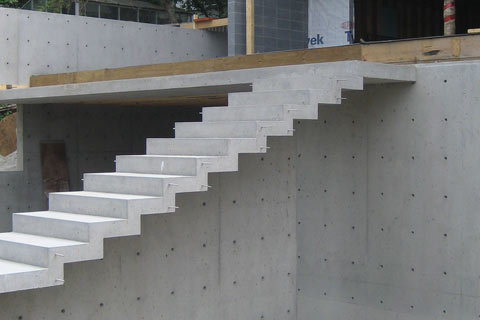
Slabless staircases (also known as sawtooth or zigzag staircases) which do not have a waist, offer aesthetically pleasing alternatives in modern developments and are often a source of wonder to those who do not understand the design and detailing principles underlying their construction.
Stair Industry Definitions
Rise (r) - the vertical distance between two consecutive steps. The maximum number of risers in a single flight should be 16, except where it is not practical to fit in intermediate landings at 16 riser intervals. In such cases the number of risers may be increased to 22. In no case should the number of risers be less than three in a single flight.
Tread - the horizontal part or upper surface of the step.
Nosing - the front edge of a tread.
Going (g) - the chord length on plan between two points on consecutive tread nosings at the same radius from the geometric centre of the stair. Recommended goings are given in the table below. It should be noted that the inner and outer goings differ considerably from the centre going.
Inner Going (gi) - the inner going, which is the minimum going, should be measured at a point 270 mm horizontally from the inner handrail.
Outer Going (go) - the outer going, which is the maximum going, should be measured at a point 270 mm horizontally from the outer handrail or string, whichever is the least radius.
Waist - the thickness of the flight measured perpendicular to the soffit. The waist dimension is governed by Span:Depth ratios, set out in the design codes to limit deflection, together with the nominal concrete cover required to meet Durability and Fire Resistance requirements. Storey height Kallisto flights need to be robust to cater for the substantial handling loads generated during de-moulding, transport and installation, so they are manufactured with a 180mm minimum waist.
BS 5395-2:1984 Table 2 - Stairs, Ladders and Walkways. Code of practice for the design of Helical and Spiral Stairs
|
Stair Category |
Rise (r) |
Rise (r) |
Going (g) |
Going (g) |
Going (g) |
2r+g |
2r+g |
|
|
Min |
Max |
Min Inner (gi) |
Min Centre (gc) |
Min Outer (go) |
Min |
Max |
|
A. Small private stair intended to be used by a limited number of people who are generally familiar with the stair. Typical outside diameter 1300mm to 1800mm, e.g. internal stair in a dwelling serving one room not being a living room or kitchen, access stair to a small room or plant in an office, shop or factory, not used by the public, or fire escape for small number of people |
170mm |
220mm |
120mm |
145mm |
350mm |
480mm |
800mm |
|
B. Private stair similar to category A but also providing the main access to the upper floor of a private dwelling. Typical outside diameter 800mm to 2250mm |
170mm |
220mm |
120mm |
190mm |
350mm |
480mm |
800mm |
|
C. Small semi-public stair intended to be used by limited number of people, some of whom may be unfamiliar with the stair, e.g. stair in factory, office, shop, or common stair serving more than one dwelling. Typical outside diameter 2000mm to 2250mm |
170mm |
220mm |
150mm |
230mm |
350mm |
480mm |
800mm |
|
D. Semi-public stair intended to be used by larger numbers of people, some of whom may be unfamiliar with the stair. Typical outside diameter 2150mm to 2550mm, e.g. stair serving a large floor area in factory, office, shop, or common stair serving more than one dwelling |
150mm |
190mm |
150mm |
250mm |
450mm |
480mm |
800mm |
|
E. Public stair intended to be used by large numbers of people at one time, e.g. stair in place of public assembly. Typical outside diameter 2500mm to 3500mm |
150mm |
190mm |
150mm |
250mm |
450mm |
480mm |
800mm |



